
Kaltern is really fun at the moment - especially if you are a demanding, curious wine lover. After the turnaround from mass production to high-quality wines in the 90s, the first 10 years of the new millennium have seen a great deal of change in terms of the independence and authenticity of the wines. On the one hand, this is due to the general trend in South Tyrol. In Kaltern there are also many new, ambitious wineries enriching the scene. And one thing is noticeable in South Tyrol's best-known wine village: it is becoming ever greener. The number of certified organic wineries has now grown to seven and - just as importantly - the (still) 'conventional' wineries are very open to ecologically sustainable practices, because they realise that this is good for the quality and independence of the wines.
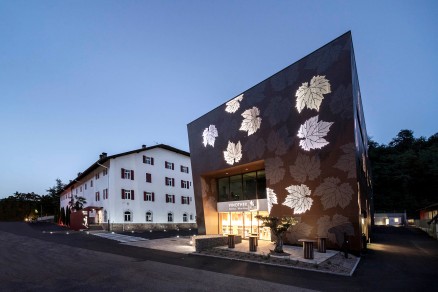 |
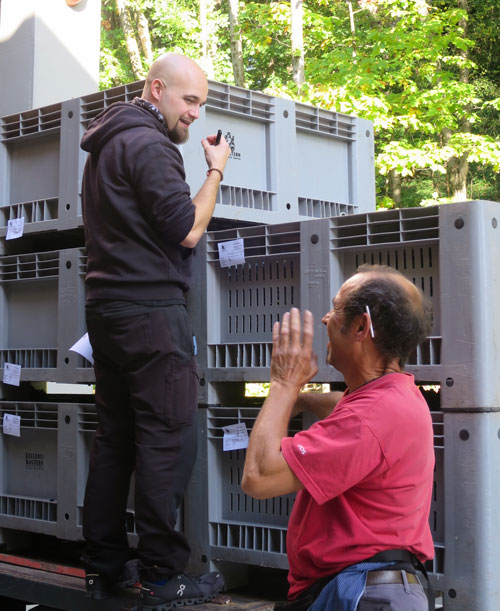 |
With 650 members and a cultivated area of about 450 hectares, Cantina Kaltern is the largest cooperatively organised winery in South Tyrol. Its goal is to "bring out into the world what makes this small community on South Tyrol's largest natural bathing lake and its wine so unique, namely the community behind it. The spirit, the euphoria, the common striving, the wine, the village and of course also the 'natural beauty of Kaltern'". Of course, many texts on homepages and in brochures sound like this or similar. However, I was able to experience that this is also lived here during my last visit, which took place in autumn 2019 for the wine harvest. I met with cellar master Andrea Moser at the grape delivery and in the course of the conversation there were at least 15 winegrowers who delivered their Merlot grapes. Andrea Moser knew everyone personally and took the time to talk to people at length, not only about the quality of the grapes and other wine-related topics. This intensive, personal contact also takes place throughout the year, and the associated advice serves both the quality of the grapes and compliance with the very high ecological standards here. In addition to these two aspects, the social component - both within the winery and externally - is also very important to those responsible. A sustainability concept was therefore developed that covers the areas of business management, environmental protection and social commitment and is guaranteed by Fair'n Green certification.
Since the merger, the product range has been divided into three product lines. The 'Classic Line', which is allabout "relaxed drinking pleasure" with refreshingly light and at the same time down-to-earth wines that are intended to clearly express the typicality of the varieties and the special features of the growing area around Lake Kaltern. In the 'Selection Line', the emphasis is on "terroir that you can taste". The wines are made from hand-picked grapes of the best quality, grown in established vineyards with old vines and low yields. In the top line 'Quintessenz', the focus is on five major leading varieties: Sauvignon, Cabernet Sauvignon, Pinot Blanc, Vernatsch (for Lake Kaltern) and the noble sweet Goldmuskateller, whose grapes are pressed exclusively from the "character sites" and for which the ecological demands are even higher.
Like the other cooperatively organised wineries in South Tyrol, Cantina Kaltern has also completed its range with a very special selection in the high-end segment - the 'kunst.stück'. This is a wine made from a batch of grapes that cellarmaster Andrea Moser was particularly enthusiastic about because of its specific vintage quality. Nature decides which wine it is. Thus, in the premiere year 2014, which was characterised by relatively cool average temperatures, a Pinot Blanc was pressed as a 'kunststück'. The following year it was a Cabernet Sauvignon Riserva and in 2016 - certainly surprising for many - the local hero Kalterersee Classico Superiore. The latest "kunst.stück" will be presented in October 2020: a Merlot Riserva 2018. Also in the qualitative high-end range is Andreas Moser's 'playground', where he lets off steam with the XXX wines. XXX stands for "experiment-explore-exclusive". There are no stylistic guidelines here and a wide variety of wines are produced: orange wines, spontaneously fermented wines, unfiltered wines, Vernatsch that is aged 100% in barriques, Pet-Nat from Riesling, etc.. Andrea Moser has every freedom here and can do what he finds exciting. The only prerequisite: absolute top quality. The winery does not make a big fuss about these wines. You don't even find them on the website. What's important to Andrea Moser, "besides the pleasure I get from these wines as a cellar master and wine connoisseur, is that they broaden our horizons and that we can also use the experience gained here for our 'normal' production."
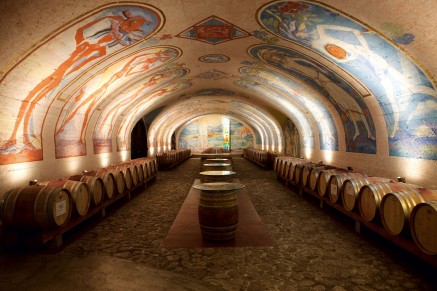 |
Created from the merger of the Erste Kellerei (founded in 1900) with the Neue Kellerei (founded in 1925), Erste+Neue has been incorporated into the Kaltern Winery since 2016, while still retaining the Erste+Neue brand as well as the original style of the wines. The vineyards from which the grapes originate are largely identical to those of the Kaltern winery, but the wines from them differ in style from those of the new parent winery, especially in the 'Puntay' selection line. Here, large wooden barrels are used for the white wines, which leads to a somewhat softer character with more creaminess, whereby elegance and freshness are always the defining elements of the wines. The reds are somewhat more structured compared to the corresponding varieties of the parent house. In the classic line, the emphasis is primarily on fresh fruit and filigree structure. With the exception of the rosé, all the wines are made from the traditional South Tyrolean grape varieties.
A must on a visit to Kaltern is the Puntay cellar of Erste+Neue. The walls of the historic cellar, built in 1999, were decorated by South Tyrolean artist Robert Scherer with colourful motifs from wine mythology, combining dignified historical atmosphere with cheerful animated liveliness.
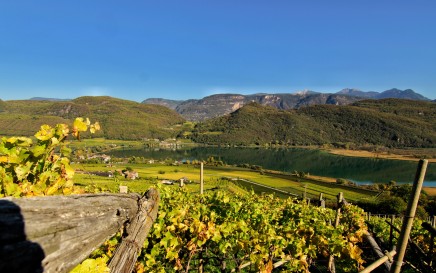 |
The Di Pauli family came to Kaltern from the Val di Fiemme about 300 years ago and, in addition to viticulture, was also active in politics at regional and national level until the 19th century. The winery was run as a family business until 1932. Due to the upheavals after the First World War, when South Tyrol was incorporated into the Italian state, the traditional sales markets in the north fell away and South Tyrolean wine producers had to compete with low-cost suppliers from the south, which led to the winery being converted into a cooperative. The family itself left the cooperative named after it in 1960 and managed the wineries Arzenhof near Kaltern and Höfl unterm Stein in Söll near Tramin, but did not produce any wine itself but delivered the grapes to the Brigl winery. At the beginning of the millennium, however, they wanted to use the special potential of these two sites to produce their own wine. Since they no longer had their own cellar structures, the wines were vinified at the Kaltern Winery. From the beginning, the goal was to produce high-quality wines in the premium segment, for which "no compromises are made. Yields in the vineyard are reduced to a minimum so that the vine can concentrate all its strength on just a few grapes." The vineyards are cultivated close to nature. The range currently consists of nine wines. The white wines are the South Tyrolean classics Sauvignon Blanc and Gewürztraminer, as well as Riesling, and the red wines are Vernatsch for Kalterersee 'Kalkofen' and Lagrein. There is also a white and a red wine cuvée as well as the 'Mythos', a Gewürztraminer that is only vinified in very special years - only three times in the past 16 years. It is vinified as the cellar master deems appropriate based on the vintage. As straw wine made from dried grapes, or as ice wine, as in 2004 - very unusual for Italy.
The wines of the Kaltern Winery, the Erste+Neuen and Baron di Pauli are available for direct sale at the Wine Center.
39052 Kaltern
Tel. +39 0471 966067
info@winecenter.it
www.winecenter.it
info.kellereikaltern.com
www.kellereikaltern.com
The wines of the three wineries in the wine reviews of wein.plus:
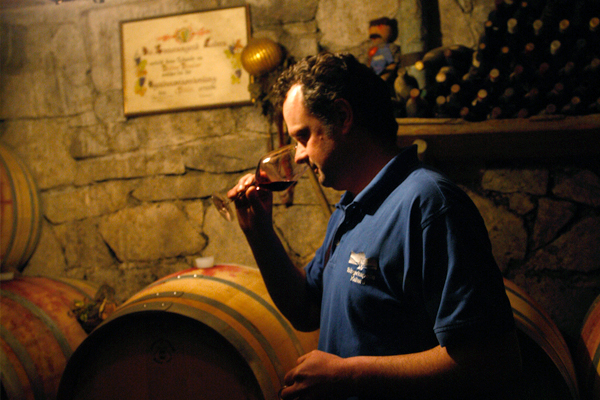 |
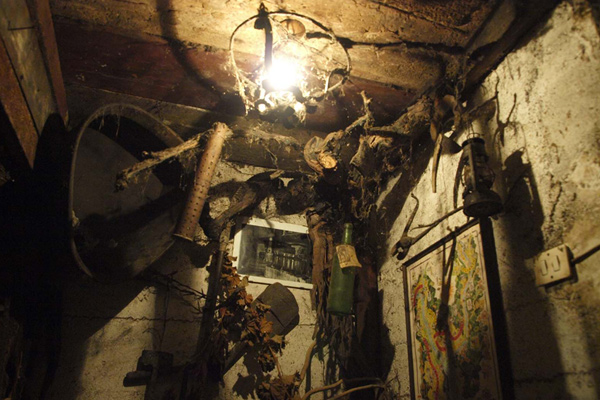 |
Thomas Pichler is a winemaker with a strong connection to tradition, and at the same time he has always been 'a bit different' since he started producing his own wines in 2003. Fifteen years ago, when all other producers were producing the classic Kalterersee as an uncomplicated wine to be drunk young, he pressed his very special Kalterersee, the 'Olte Reben', from vines up to 90 years old. A Kalterersee in which the typical mild almond and cherry aromas of this wine are combined with noticeable, yet harmoniously integrated, soft tannins. Due to its consistently dry ageing, the 'Olte Reben' is at the same time a demanding wine, in which juiciness and drinking flow are combined with complexity and depth. Thomas Pichler's two other Vernatsch wines are also a little different. The 'A bissl wos BSUNDERS' is made from grapes that are crushed on the vine and thus slightly dried, resulting in a very dense, full-bodied wine that is at the same time juicy, animating and thus extremely exciting. The 'A bissl ROSÈ' is simply 'a bissl anders' (a little different) because a rosé is practically never made from Vernatsch. Both are Vernatsch interpretations that are simply a joy to drink with their very special style. Thomas Pichler's credo for the white wines is also: fully ripe grapes that produce intense, long-lasting wines, in which a salty minerality ensures finesse and drinkability - not only in their youth, but also after a few years of ripeness. For the powerful Lagrein Riserva 'Sond' and the Cuvèe 'Furioso', a certain maturity is absolutely necessary. Both are dense, complex wines that need time to open up and fully develop their inherent qualities. With all wines, you can sense what Thomas Pichler wants: "A good glass of wine should be a pleasure to drink, and personality should be expressed when enjoying it, shaped by the character of the winemaker and the wine-growing region. When it comes to vinification, I don't think much of theories, but rely on feeling, the nose and the mouth for all decisions. There is no intention of bottling any fashionable wines with all kinds of aids".
In the vineyard and in the cellar, the motto is "as little as possible". Thomas Pichler is not an organic winegrower, but has not used herbicides and insecticides since he started as a winegrower. Production has never been particularly large, and he wants to keep it that way. "What's important to me is that I can do everything myself, so there will certainly never be more than 20,000 bottles a year." Given this relatively small production volume and the quality and idiosyncrasy of the wines, the price level is decidedly civil. Except for the 'Furioso', everything is in the middle range.
Direct sales by appointment:
Vineyard path 4, Kaltern
Tel.: +39 0471 963 094
info@thomas-pichler.it
.jpg) |
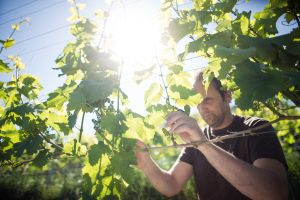 |
When Andi Sölva presented his first wine in 2009, he immediately caused a sensation and a certain irritation among traditionally minded lovers of Lake Kaltern as well as among his colleagues. His Klassischer Kalterersee with the - supposedly - English name 'Sea' was darker and tasted much stronger than most Klassischer Kalterer. Yet the then newcomer was a very tradition-conscious winemaker at heart and his wine, despite its difference and modern-sounding name, was a throwback to earlier times. As was customary in the past, the wine was made from a blend of different grape varieties. In addition to the normal Vernatsch, these were varieties such as Edelschwarzer (the Negrara Trentina grape from nearby Trento) and Grauvernatsch. This sometimes resulted in a stronger wine, and thus Andi Sölva remained true to tradition. His Kalterer was the kind of wine that guests in the inn ordered when they wanted something better than the usual, rather light house wine. "Giab ma an Sea" was the name in the Kalterer dialect with emphasis on all vowels - which also clarifies the naming of Andi Sölva's Kalterer. "This linguistic reference to the terroir and to our Kalterer tradition was and is important to me," says Andi Sölva. In the meantime, the 'Sea' is recognised and appreciated by everyone in Kaltern as a valuable enrichment of the local wine offer, and Andi Sölva produces several other interesting growths in addition to this wine. With all of them he remains true to his line. That is: handcrafted, traditional wines with a certain substance and ripeness as well as an unmistakable individual signature. "The most important thing for me is first of all the appropriate location in which the grapes can fully ripen without losing their freshness and elegance. Then the maturation in large wooden barrels and/or used barriques as well as a partial mash fermentation also for the white wines Pinot Blanc and Riesling. The ageing should never determine the taste of the wines, but rather ensure that the fruit components do not present themselves superficially, but rather in a calm, restrained and profound manner."
For the second red wine that Andi Sölva produces next to his 'Sea', he relies on Cabernet Franc instead of the more sonorous Cabernet Sauvignon, which is often considered to be of higher quality. "Cabernet Franc ripens about ten days earlier than Sauvignon and guarantees me fully ripe grapes practically every year. I also appreciate the somewhat heartier character of this Cabernet variety."
In addition to his own wines, Andi Sölva also produces the line '"VIRIBUS UNITIS" (with united forces) together with his colleague Norbert Kofler from the Terlan winery Kiemberger. These are three "joint wines". The rosé 'Flaschenpost' from Lagrein, Vernatsch and Cabernet as well as a red and a white wine cuvée. "They are meant to unite interesting and exciting things from our two cellars."
Tasting and sales by telephone appointment
Barleiterweg 24
I-39052 Kaltern on the lake
Tel.: +39 349 3233246
info@andisoelva.com
www.andisoelva.com
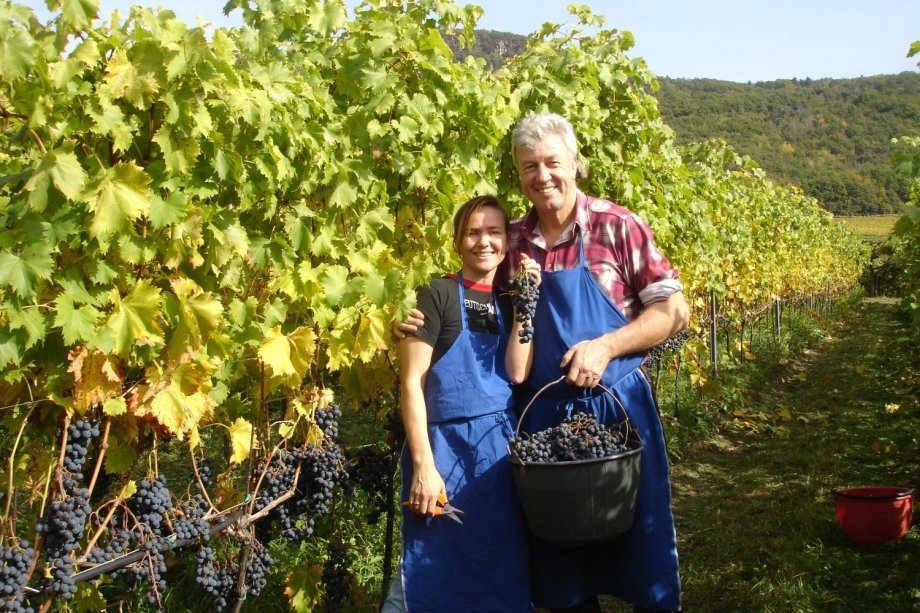 |
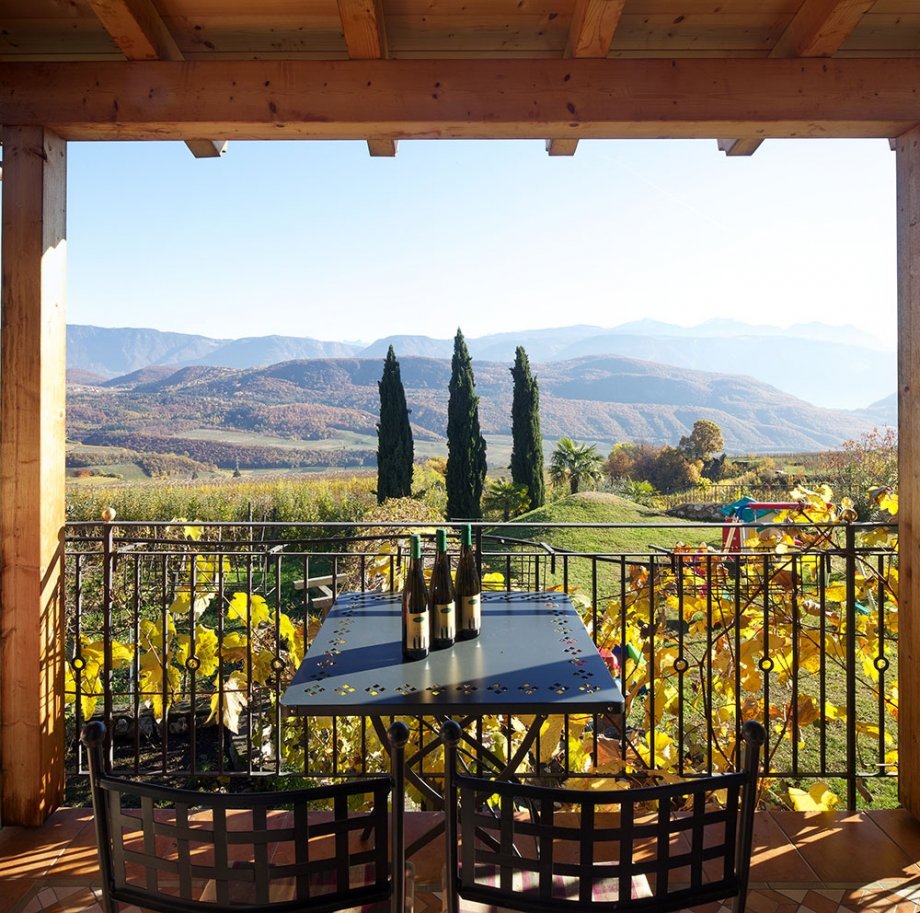 |
Werner Morandell is one of the pioneers in South Tyrol. Along with Rudolf Niedermayr in Eppan, he was one of the first to work with fungus-resistant varieties and he is certainly one of those to whom it is partly thanks that these varieties now produce very good quality wines - not only in South Tyrol - and have an increasingly good reputation. "Without quality, there is no point in producing wine - not even with resistant varieties," says Werner Morandell. "We have taken a difficult path with our focus on these varieties, but it has always been my dream to produce top qualities with the PIWI varieties. I have now achieved 99% of that through ever more yield reduction, more meticulous cellar work and, above all, by becoming familiar with the peculiarities of these varieties. But it was at least as difficult to bring these varieties with their names, which until recently almost no one knew, into the consciousness of discerning wine consumers. We have already succeeded very well with the curious among them, but there is still a lot we can do. However, since there are more and more PIWI wines that come out ahead of high-quality wines from 'normal' varieties in blind tastings, this should not cause us any problems in the future." Werner Morandell has always been someone who has "danced on five weddings at the same time with his commitment to PIWIs. The wine production here on the farm, lectures all over the country, books about PIWIs, customer care, etc.". Now he has stepped back a bit. But he has not lost his enthusiasm for PIWIs, because "there are still many things that have not yet been properly explored. Which varieties in which locations, the combination possibilities for cuvées, new varieties, the possibilities of new varieties that have only recently been added or varieties that will be added in the future. We are still at the beginning. But in any case, it's already very promising and stimulating."
Currently, four white wines, two reds, three sweet wines and one sparkling wine are offered, all made from PIWI varieties except for Pinot Blanc, Gewürztraminer and Cabernet. "In terms of marketing, that's probably too many different wines, but in order to really show off the characteristics of our varieties and sites, we chose this route." And with success, because almost all of it goes to upscale restaurants in South Tyrol, Italy and neighbouring countries.
A must when visiting the Lieselehof is a tour of the "vine museum". Werner Morandell has planted 360 different grape varieties from all over the world in a vineyard in front of his house. Especially in autumn, when the leaves change colour, a unique sight.
There are 4 flats with private terraces and lawns.
Wine seminars and guided tours with wine tastings are offered.
Karditscherweg 6, Kaltern
Tel.: 0471 - 965 060
info@lieselehof.com
www.lieselehof.com
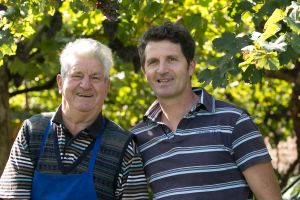 |
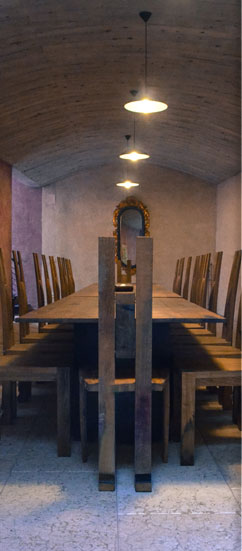 |
Walter Andergassen rebelled in the early seventies because he was tired of getting less and less money for his grapes from grape buyers. He took the winemaking and sales into his own hands. As a result, the wine was no longer sold open or in bulk, but exclusively in 7/10ths bottles. A novelty in Kaltern at that time. The range, which until then had consisted only of Vernatsch, was gradually expanded and now consisted of Vernatsch, Chardonnay, Gewürztraminer, Lagrein and Merlot. As rebellious as Walter Andergassen was in the 70s, his son Georg now runs the family winery in the heart of Kaltern in a calm and reserved manner. After his father achieved his goals - high wine quality and independence from grape buyers - consistency and cultivation of what has been achieved is more the order of the day. However, this does not mean that time has stood still at the Steflhof, because "with wine you always make new experiences and there will always be something that can be done better or simply differently," says Georg Andergassen. The wines are typical, traditional Kalterer Gewächse, which at the same time present themselves in a modern way. Delicately fruity, delicate and elegant is the Kalterersee, full-bodied and spicy the Gewürztraminer, fruity fresh the Chardonnay, dark fruity the Lagrein and full-bodied the Merlot.
The design of the tasting room, which is integrated into the underground cellar, also combines tradition and modernity. The all-wood furnishings are functional, simple and dignified and were made from the staves of old wine barrels.
Meanwhile, son Manuel is taking on more and more responsibility. And after graduating from Geisenheim University and the University of Trento, he is full of youthful energy, which he wants to use, among other things, to gradually convert the winery, which is currently working 'close to nature', completely to 'organic'.
You can also rent flats at the Steflhof and enjoy the wine culture of Caldaro in 300-year-old walls in the historic centre of the village.
Direct sales by appointment and at the sales stand on the road from the village of Kaltern to Kalterer See Opening hours 8.00 to 18.00
Penegalweg 8, Kaltern
Tel.: +39 0471 964 955
info@steflhof.it
www.steflhof.it
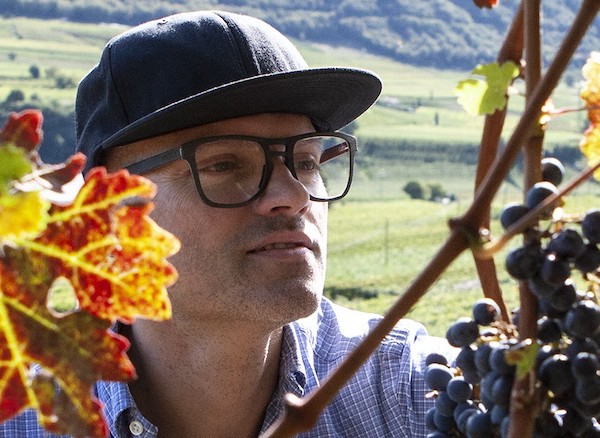 |
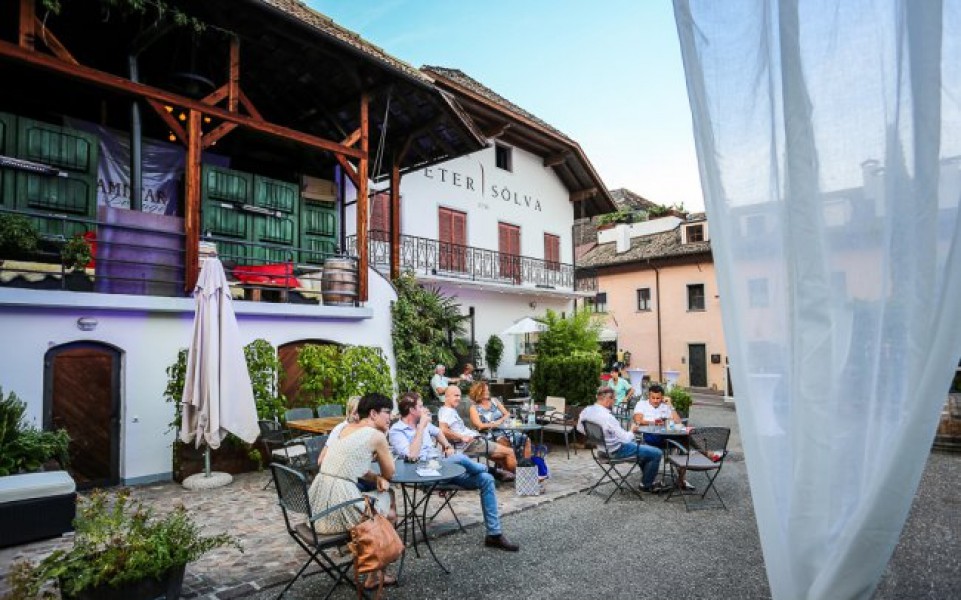 |
The Peter Sölva Winery can look back on a history that now spans ten generations, making it one of the oldest wineries in Kaltern. For centuries, it has always been passed down from father to son; Stephan Sölva is currently in charge of the winery. His work is shaped by the history and appreciation of his ancestors' achievements. The two top lines are therefore named after the historical family names - 'DeSilva' and 'Amistar'. DeSilva was the name of Andreas' ancestor who settled in northern Italy as a winegrower around 1200. The name was then changed from DeSilva to Sölva for no reason at all. Amistar' is the family name of Susanna Amistar. She married DeSilva Kaspar Anton in 1678 and she was the last child of the Amistar family to claim the name. The wines of the DeSilva line are made from 20 to 70-year-old, deep-rooted vines and include the South Tyrolean flagship varieties Pinot Blanc, Pinot Grigio, Sauvignon, Gewürztraminer, Chardonnay, Vernatsch for Lake Kalterer, Lagrein as well as the rosé cuvée 'Perrosè' and a grappa made from Lagrein marc. Amistar, on the other hand, is a special composition of several grape varieties in memory of the family history. "Uncompromising care in the vineyard and cellar. Optimal harmony between growth and yield with a share of late harvest, among other things, make these wines special," says Stephan Sölva. The Amistar line currently produces six wines as well as a Muskateller, Gewürztraminer grappa and the Amistar brandy. Except for the Cabernet Franc, all wines are cuvées. The white wines are Chardonnay and Sauvignon Blanc, the red wines are Cabenet Sauvignon, Cabernet Franc, Merlot, Lagrein and Petit Verdot, depending on the vintage. "In order to get expressive wines, we have to turn more and more to the soil, also in an ecological sense," Sölva is convinced. Because that is where what makes each wine unique comes from. For Stephan Sölva, who is not an organic producer, this means a careful, natural approach to the soil, the inclusion of natural cycles in the work in the vineyard and cellar. "It's not important what I want, but what the plant needs. And if you then give the wines the time they need in the cellar to round off the rough edges given by nature, the result is expressive growths full of character."
Goldgasse 33
39052 Kaltern on the Lake
Tel. +39 0471 964 650
Fax +39 0471 965 711
Monday to Wednesday from 9 a.m. to 1 p.m. and from 3 p.m. to 8 p.m.
Thursday and Friday from 9 am to 1 pm and from 3 pm to 11.30 pm
Saturday from 9 a.m. to 8 p.m. (non-stop)
Closing day: Sunday
Special opening hours in July and August, autumn and winter time
"Ritterhof Kaltern, Weinstraße Nr. 1" is the address of the Ritterhof. "That actually says everything about us," says farm manager Ludwig Kaneppele with a mischievous wink, well aware that in South Tyrol, with its many top establishments, there is no absolute number 1 anyway. "But the special address is of course also an additional incentive for us to play at the top. But what is most important to us is that we can offer above-average qualities in all our wines and, beyond that, we would like to set a few exclamation marks with some selections. "The owner of the Ritterhof is the Roner family from Tramin, known for their fruit brandies and grappas, which is why Gewürztraminer plays an important role at the Ritterhof. The selection 'Auratus' enjoys great popularity, especially among Italian wine guides, and regularly receives the highest awards. Which in turn makes managing director Ludwig Kaneppele particularly happy, because the grapes largely come from his family's vineyards.
In addition to their own 7.5 hectares of vineyards, the Ritterhof also processes grapes from long-term contract vintners who cultivate a further 35 hectares. The majority of the estate's own vineyards are located near the winery near Kaltern and in Tramin, while the suppliers' vineyards are mainly located in the so-called Unterland region near Kurtatsch, Montan and Auer, as well as in the Bolzano valley floor. The Ritterhof's range is correspondingly diverse. Currently, 30 wines are offered, divided into three selection lines: 'Terra', 'Collis' and 'Rarus'. The down-to-earth Terra line forms the foundation and consists of the classic South Tyrolean wines. Varietal typicity and drinkability are in the foreground here. "They are meant to convey a piece of home in a pleasurable way. In addition, the name 'Terra' for our wines from the soil is also intended to indicate that healthy, fertile soil is very important to us as the basis of our wine production. Because if we don't treat our soils with care, we'll have to pack it in at some point," says Ludwig Kaneppele. The vineyards are therefore cultivated in a natural, environmentally friendly way. Of course, this also applies to the other selection wines. The grapes for the wines of the 'Collis' line come from the best slopes of the respective growing zones. The 'Rarus' line lives up to its name, as it consists of only two wines, the 'Sonus' made from dried Traminer grapes and the Lagrein 'Manus'. Both are only produced in particularly good years.
Above the cellar buildings is the Ritterhof restaurant, where you can enjoy the wines of the winery as well as a large selection of other South Tyrolean wines with fine, classic South Tyrolean dishes.
Tasting opportunity and sale inthe vinotheque:
Monday - Friday 8.00 a.m. - 6.00 p.m.; Saturday 9.30 a.m. - 12.00 p.m. (from August to the end of October on Saturday 9.00 a.m. - 5.00 p.m.).
Wine street 1, 39052 Kaltern
Tel. +39 0471 963298
info@ritterhof.it
www.ritterhof.it
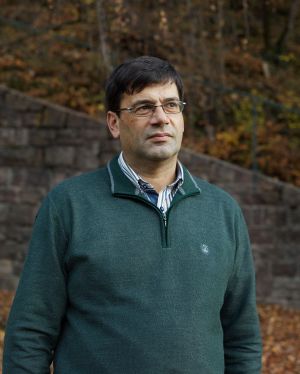 |
The Kettmeir winery is one of the oldest wineries in Kaltern. The beautifully situated winery was founded in 1919 by Josef Kettmeir and also enjoyed a good reputation for a long time. The 'dark times' of South Tyrolean viticulture, when in the 60s and 70s there was almost exclusively a demand for low-priced mass wines, did not leave the traditional Kettmeir winery unscathed and the winery was forced to produce mass rather than class. In 1986, the Italian group Santa Margherita took over the majority shares and restructured the winery from the ground up. Since then, only 7/10ths of the wines have been produced and the focus was initially placed on the production of fresh, fruity white wines, which were in great demand on the Italian market. Especially the aromatic varieties of South Tyrolean origin such as Gewürztraminer, Sauvignon and Müller-Thurgau are in great demand on the peninsula. Of course, the classic South Tyrolean red wines are also in the range. "The most important thing for us is that our wines stand out from other wine-growing regions and that you can recognise South Tyrol with its freshness, fruit and elegance in the glass," says Josef Romen, the winery's manager and oenologist. This applies both to the classic line, which consists of 12 typical South Tyrolean wines, and to the 'Grandi Selezioni' line, which includes Müller-Thurgau, Pinot Blanc, Chardonnay, Pinot Noir and the sweet wine speciality Rosenmuskateller. The grapes for this come from the 'Maso Reiner' farms in the south of the region on the border with Trentino, whose calcareous soils are particularly suitable for the Burgundy varieties Chardonnay and Pinot Noir. The 'Maso Ebnicher' above Bolzano, with its steep, sandy soils, is ideal for Müller-Thurgau. The best grapes from the sites in Kaltern are selected for the Rosenmuskateller. "In the 'Grandi Selezioni' line, we want more than the typical fruit aromas of the respective grape variety. The grapes have more depth and complexity and they need time to develop, which is why they go on sale later." Apart from the single vineyards of the 'Grandi Selezioni', they want to make their mark with high-quality sparkling wines in the top range. "The sparkling wines produced in the traditional bottle fermentation process are particularly close to our hearts, because South Tyrol with its mountain climate has unique possibilities to produce high-quality sparkling wines that have freshness and depth at the same time, and that are strikingly different from the other well-known Italian wine-growing regions Franciacorta and Trento DOC. Qualitatively, we have no problem at all keeping up with the best bottle fermenters in Italy as well as with many champagnes," says Josef Romen. The cellar master's enthusiasm for high-quality sparkling wines typical of the region will also be reflected in the production figures in the future, as this area is to be greatly expanded in the future.
Retail sales:
Monday to Friday from 9 a.m. to 12 p.m. and from 2 p.m. to 7 p.m.
Saturday from 9 a.m. to 12 p.m.
Day off: Sunday
Visits possible on request.
Cellar Street 4
39052 Caldaro
Tel. +39 0471 963 518
Fax +39 0471 963 393
The wines of the Kettmeir Winery in the wine reviews